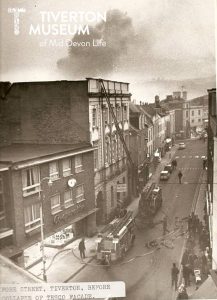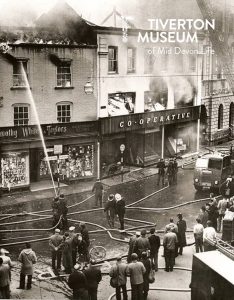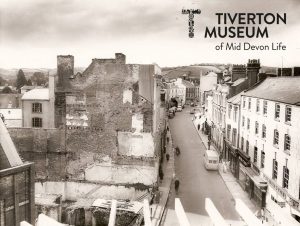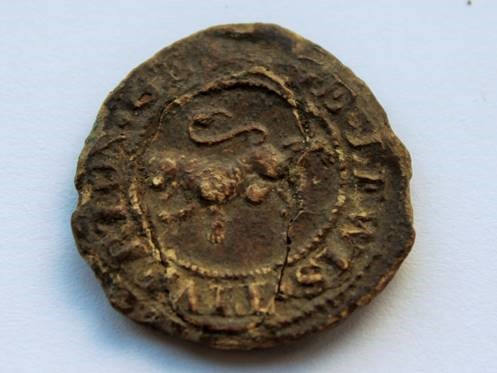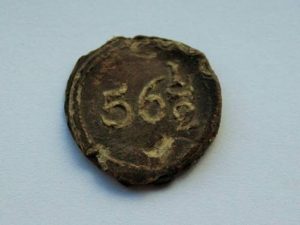
Cloth seal for George Lewis, Tiverton. George Lewis was exporting cloth between 1748 – 1776. The seal features a lion on one side and the number 56 1/2 on the other. This number means it is likely to have been used on a type of cloth called a drugget. This seal was found by a metal detectorist near the village of Uden in the Netherlands. The field where is was found is a stortakker or dump field and it is likely most of the rubbish came from the nearby city Hertogenbosch (known as Den Bosch) which used to be a major trade hub for fabrics in the province of Brabant and it lies on the river Meuse.
Tiverton cloth seals with numerals other than 22 or 21 1/2 are rare. The numeral denotes the length of the cloth. 22 or 21 1/2 is the standard length for mixed serge which Tiverton produced in large quantities through the eighteenth century, for export to the Netherlands. Other kinds of cloth were produced in Tiverton, particularly to supply to merchants based in Exeter. There was a small trade in druggets direct from Tiverton to the Netherlands, and also to Flanders. The normal length of a drugget was about 50 yards, but they could be bigger. Druggets were priced for sale by the yard which made the numeral on the seal very important, and which is why we think this seal could have come from a piece of drugget.
George Lewis moved to Fore Street in Tiverton in 1756, next to his uncles Samuel Lewis who lived in a large house later used as the Starkey Knight and Ford offices. George had his business premises at the rear. Beavis Wood, Tiverton’s Town Clerk, disapprovingly records the bad behaviour of George Lewis with two maid servants who were repeatedly turned away by other family members and brought back by George. He didn’t have a good relationship with his daughter, locking her out of the house one evening when she had stayed too long at her friend’s house. It was here that George Lewis’s son William took on the business in due course. When he was younger Beavis Wood had recorded when he was back home from Holland (many local families sent their sons to Holland to learn the language and make business connections for the cloth trade), and said he was good natured but would not improve much by living with his father and brother. Unfortunately William committed suicide here in 1798 by hanging himself from his bedpost. It was thought that he had financial worries linked to his involvement in the Tiverton Bank. Beavis Wood recorded that by committing suicide, Lewis had safeguarded money for his wife and children which they would have lost had he lived and settled his debts.
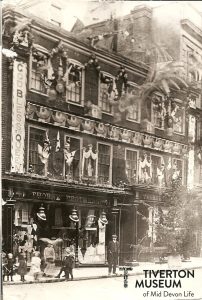
His widow quickly relocated to a cottage in Washfield. The furniture was auctioned, including a harpsichord, a post chaise and a sedan chair. Shortly after the ground floor was converted into two shops (this view dates from the coronation of 1911). Sadly, the building burned down in 1961 (as shown in the images below). The site is now occupied by Superdrug.
